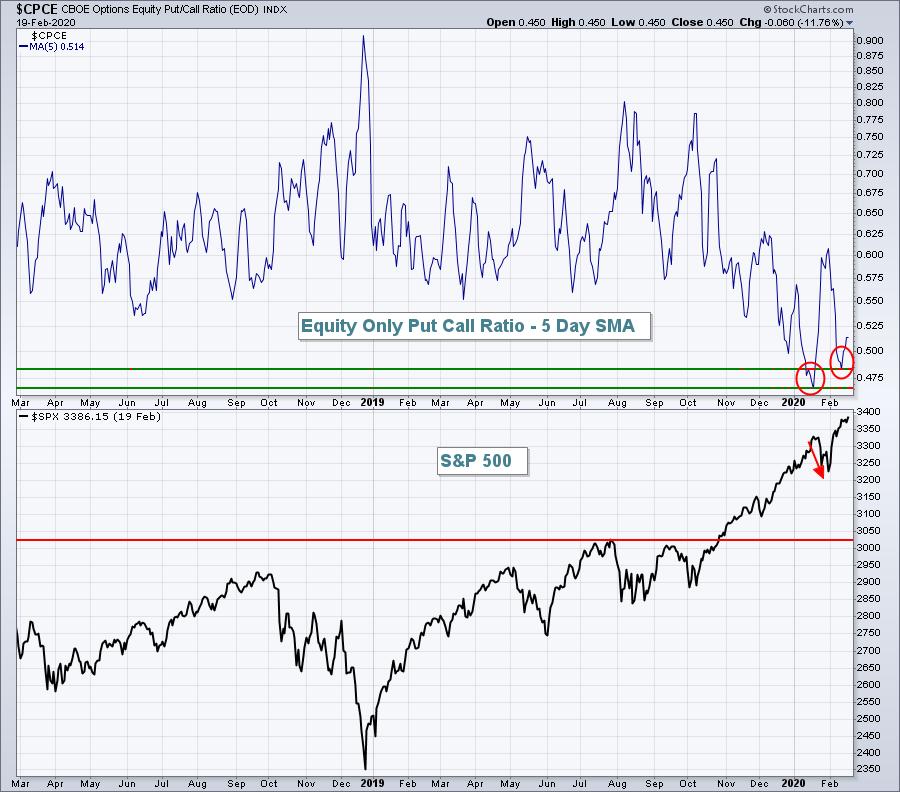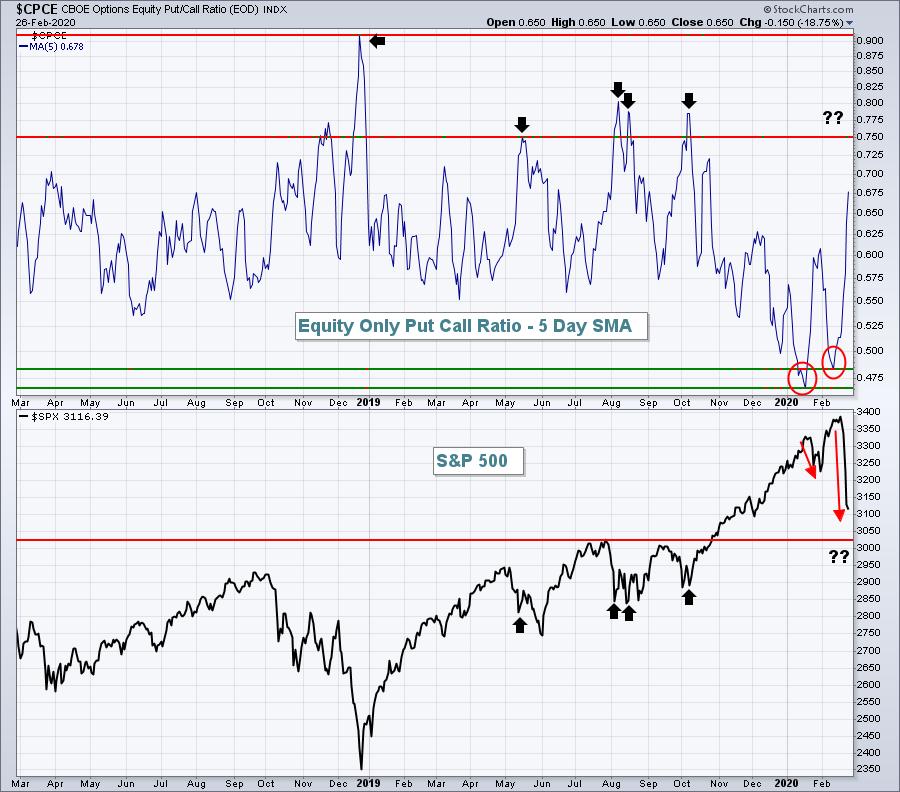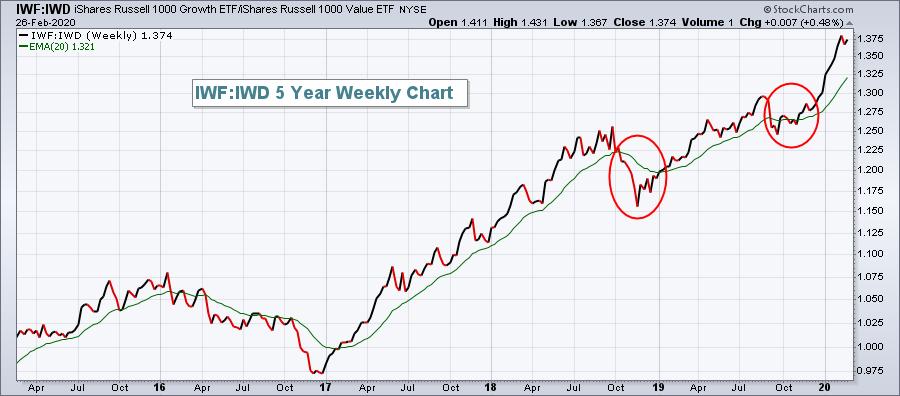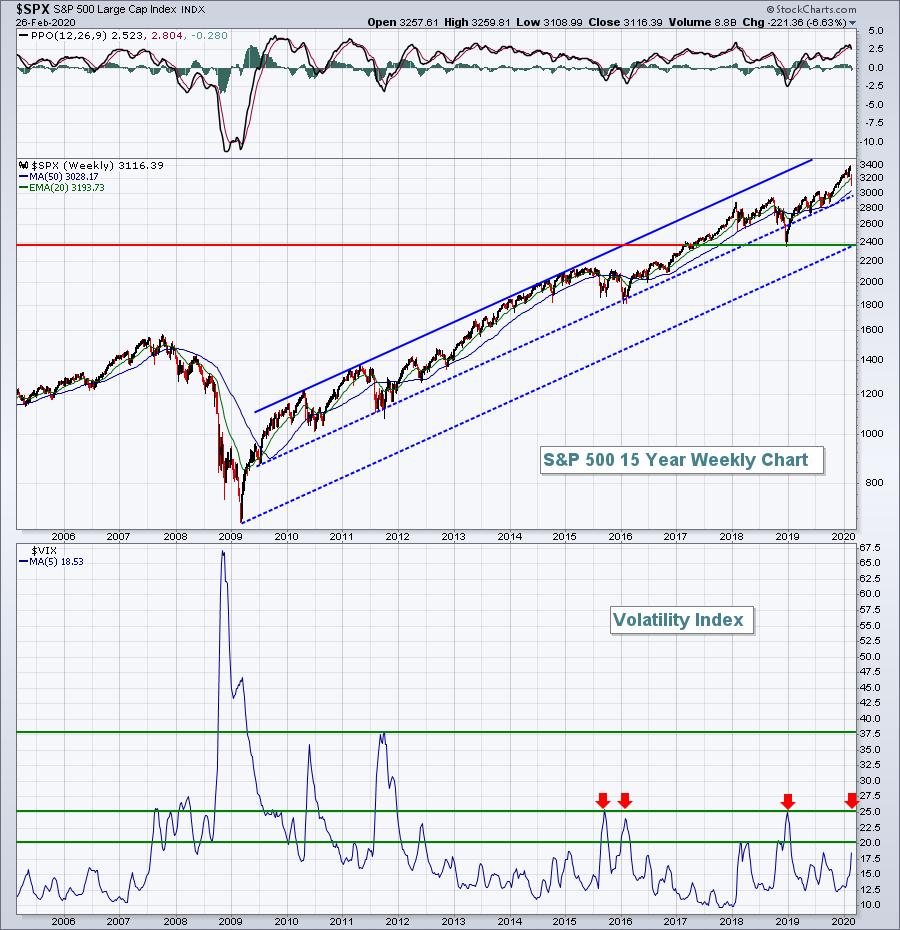One week ago, the U.S. stock market was euphoric and it had a right to be. Companies that have been able to grow earnings rapidly in a historically low interest rate environment, with rates likely to move even lower, were seeing those earnings valued at a record level. GDP growth is moderate and many were expecting it to rise further. That would translate into further earnings growth, discounted back at very low interest rates, and that combination was producing a mammoth rally.
Then we had two separate events hit the market hard. First, and this can't be overstated, there was a TON of net in-the-money call premium on the table as we headed into the last two days before those options expired. The equity only put call ratio ($CPCE) was flirting with record lows, underscoring the bullish short-term sentiment. That was a big problem, but that kind of problem is generally very short-lived. Here was a 5 day moving average of the CPCE at the close last Wednesday:

There was tremendous financial incentive for the market to move lower in the very near-term and that's exactly what we did last week to close out options-expiration Friday. We had similar issues in January and the red directional line shows what happened in the second half of January. This is nothing new to the stock market as the 19th through 25th period on the calendar (of all calendar months) has produced annualized returns of -8.78% since 1950. It's the way the market works. The bullish sentiment issue has already been resolved with the action the past 5 trading days. Here's an updated look at that very same chart through yesterday's close:

Now sentiment is heading in the other direction.
That brings me to the second issue, and the much more dangerous issue - fear that's building over the coronavirus. Wall Street loathes uncertainty. While the coronavirus will likely be a temporary economic disruption, there's currently no telling how bad it might get and how much economic activity will suffer. When the stock market grows concerned over growth prospects, growth stocks are generally crushed. We can review this by comparing the Russell 1000 Growth ETF vs. the Russell 1000 Value ETF (IWF:IWD). We saw the deterioration in this ratio in Q4 2018 with trade war concerns and again in 2019 as those concerns resurfaced. Currently, this ratio has held up fairly well and a chart worth watching. Here's a quick visual:

Honestly, I don't know how to interpret this. If economic activity is truly expected to be impacted heavily by the coronavirus, this ratio should be tumbling, but it's not - at least not yet. Futures are pointing to another big drop this morning, so maybe take a look at this ratio throughout the day. If we keep seeing further drops in our key indices, but this ratio remains near a high, I'd begin to believe the fear is overblown. If, however, this ratio begins to tumble, then impulsive selling is more likely to be with us for awhile.
Let me be very clear about one thing. I despise trading in a highly volatile environment and that's exactly what we have now. Ultimate bottoms are set with MAJOR tops in the Volatility Index ($VIX). A very key price support level on the S&P 500 was established in October with the breakout above 3025. That is a very important technical level to hold. Please remember that when the market turns extremely fearful, technical support levels mean almost zero. Therefore, I'd watch 3025 closely. If that critical support level sees no significant buying, then we need to consider that a secular bull market bottom will likely form as the market capitulates. Here's a long-term weekly chart to suggest an area to watch for:

This latest fear epidemic reminds me a lot of early 2018 when the stock market was humming along in secular bull market mode, and was thrown a curve ball by the emerging trade war concerns. The 5 week SMA of the VIX only hit the 20 level. I believe that's what we're likely to see here. Then look for a swift market rebound until we get more information about the coronavirus over the course of the next 1-3 months. Much more information will be known then, and the stock market will be in a better position to evaluate that information.
While the coronavirus has certainly evolved into a major health risk globally, I still firmly believe we remain in a secular bull market where an important bottom will be marked by this event, either this week, next month, or perhaps later in the year.
I will keep our EarningsBeats.com members posted on the above charts and others to help evaluate the short-term risks in the stock market. If you'd like to join our growing community, you can CLICK HERE for a refundable $7 30-day trial.
Be careful and happy trading!
Tom






